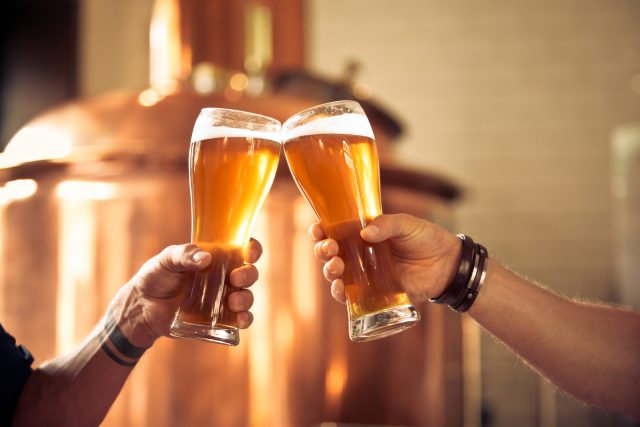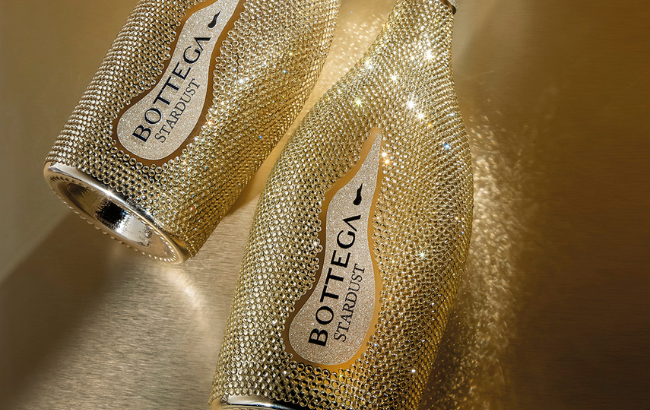How to run a successful brewing business and avoid closure
Brewing and beer experts offer up their advice on how to run a successful brewing business and how to navigate mounting challenges this year.

Don Burgess, who originally founded the Freeminer brewery in Gloucestershire in 1993 – making it one of the first small breweries to break into supermarkets, has been championing the independent beer industry for over 30 years and as such is oft-considered one of the greats of the British beer scene. Burgess, currently at Demon Brewing Support in Forest of Dean, now divides his time between international beer judging, consultancy and brewing
Burgess told the drinks business what advice he would give to brewing business owners trying to stay afloat and outlined a range of business guidelines to follow to help in assessing the company from the ground up.
Firstly, to set the scene for focusing on the brewing business, Burgess cited “OST” which is “an acronym for Objective, Strategy, Tactic” that he pointed out is “straight from the Alastair Campbell playbook” demonstrating how independent brewery business owners need to first look at their objective and “decide what you do, the market share you want, the sector you want to be in, how much you want to grow, or stay put (maintain).”
Burgess then stated how pinpointing a strategy is paramount for small brewery businesses. This can mean “packing format, social media, beer styles, distribution format (on/off sales/tap/pub cos/mail order)” as well as thinking about tactics, giving examples like whether you choose to “hire short term advice from proven operators” or “hire or learn how to optimise social media for free adverts/ pay for targeted adverts”.
He also said that brewery owners needed to consider their beer brand’s “visibility” and observed how many needed to “spend to ensure best quality” and then “decide on what is and isn’t cost effective by actual examination, not gut feel”.
Speaking about the struggles breweries were facing, International Brewing and Distilling (IBD) accredited trainer, beer sommelier, Cask Marque assessor and former brewer and chair of the Society of Independent Brewers (SIBA) Nigel Sadler told db: “Most breweries, by now, will have undertaken any cost cutting measures open to them” because “keeping costs down and losses to a minimum remains paramount for the next year or so”.
Echoing the importance of this, Burgess suggested it might be a good idea to “invest in brewery management software Breww/EKOS [and] use it to its fullest ability [to] look for cost black spots”. Burgess used the example of the overuse of hops when it really wasn’t necessary, like “using 20kg of hops when 10 would do” and reiterated that “often hops are wasted through overdoing it [because] there are flavour plateaus beyond which it becomes more of a shouting match than a real benefit”.
He also advised that brewing business owners needed to “objectively look at products, lose the slow sellers, trim the herd” and pointed out how “occasional releases can be better than aged, oxidised product held on the off-chance of a sale” and encouraged other brewers to “be ruthless about slow selling products vs cost of production and storage [because] cooling is expensive”.
To really bring the business back to shape, Burgess advised that breweries should “dump bad payers” and said “be brutal about this, they are bleeding you dry”. Additionally, he urged “re-sell as much as you can” and “plan ahead so that you can market beers, keep stocks lean, guarantee hop supplies, manage energy requirements and bills”.
To cut down further costs, Burgess hinted that it would be savvy to “use a commercial energy negotiating company [because] they work by getting a cut of the savings they make for you” and this way it makes it possible to “review all energy supply bills regularly”.
Other soundbites of advice from Burgess involve making strides to “review distribution” and, as he explained: “That pub 40km off your usual route is probably costing your profit for the delivery, look at the average distance per unit delivered [so] distribution is another invisible drain, add vehicle costs into the equation.”
Partner Content
He suggested: “Spend money on checking via Murphys [the brewing supplier that also offers technical brewing advice] or similar to find out what your DO2 (dissolved oxygen) is like in packaged product” highlighting how “too many faults come from poor conditioning and high dissolved oxygen caused by poor control at packing”.
But the crux is to “have a plan and stick to it, review it, justify deviation, hire external advice for the odd day, pay them what they ask (transport, hotel) and listen to their outside, impartial advice”. Or also “buy Alastair Campbell’s book – But What Can I Do?” and noted that “his advice is about clear thinking and good strategy really worth a few quid on Kindle”.
Food and drink tour guide, beer educator, sommelier and judge Cheryl Cade told db that the “most important piece of advice” really is “keep it simple” and indicated that there is a chance working with other businesses to garner extra support and advice could be one route to take. She explained: “If there is a food cluster near you, contact them to see if there is funding for business help, especially if it gives you an outside business advisor who can get an overview of your business. They can also identify who your real end user is.”
Cade also urged brewery owners to “go into the venues you retail in, buy your beer or if you’re known get others to buy it to see how it’s really sold and served” and “offer training to the front of house staff [because] they are the ones who sell your beer”.
One thing the beer experts had in common was their admittance that the situation was not easy and there still was not a one-size-fits-all piece of advice. Each reasoned that this was why their advice was so intricate and far-reaching, because it needed to include all areas of the business.
Burgess admitted: “I know it’s not a single piece of advice, but it’s a war on all sides to survive right now” and said “OST and a really good software system to control price are probably tops right now, but all the other points blend in to more than just a single point”.
Sadler advised: “I would, personally, avoid trying out new styles without some serious consideration. Stick to the core beers that sell and sell well. Maintaining a positive cash flow, albeit small, is a big plus rather than being another ‘me too’ beer using the latest hop or technique.”
In terms of the style of beers presenting well at present, Cade revealed “it’s the low and no alcohol beers alongside the Free From [beers]” and admitted that she had been “impressed with a number” she had tried recently, but warned “there are still some bad examples out there [that are] worty, watery over-hopped (it still doesn’t hide a bad beer) messes” but stated that “on the whole it is a market that has finally started to develop beers where you sometimes have to double check the ABV as they taste good”.
Sadler also observed how “the low to no alcohol category continues to improve and develop” but warned that “this isn’t an easy area to get into in terms of large volume as it’s predominantly small pack trade” but hinted that he “certainly expect further growth over the next two years and perhaps more on tap versions appearing”.
According to Sadler: “With the forthcoming duty changes, the lower end of the everyday ABV range presents another possible target that might well also appeal more to certain sectors i.e. 3.1-3.4% ABV level” and yet he predicted that the sector is likely to see “one or two more macro brands drop to these levels”. He lamented: “I really honestly don’t expect the draught duty discount to have much impact on cask ale sales, sadly”.
In terms of what to brew, Burgess revealed that, for him, his “beer breakdown “is 85% traditional ales (diverse cask styles) and 10% cider, 5% lager, based on the brewery tap” and highlighted that, in terms of margins, he sees more return from cask and stated “cask [has a] shorter turnaround [since there is ] no lagering [and you need] six weeks minimum for decent lager”.
Instead, he advised that “very hop-forward cask beers can be made with sufficient skill, requiring only a few days rest post fermentation” and so this should remain a core focus during these tough times for breweries trying to stay afloat.
Related news
Find out the UK’s most affordable cities for food and drink




